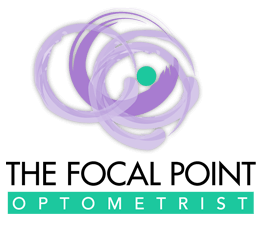Clear Vision, Seamless Transitions: Bifocal & Multifocal Contacts
Presbyopia is a common age-related condition that affects the ability to focus on close objects. It is caused by the natural lens of the eye hardening and losing its flexibility. Presbyopia typically begins to develop around age 40 and worsens with age.
People with presbyopia often need to wear reading glasses or bifocal glasses to see clearly up close. However, bifocal and multifocal contact lenses are also available for people with presbyopia.
The Difference Between Bifocals and Multifocals
Bifocal and multifocal contact lenses are both designed to correct presbyopia, a common age-related condition that causes difficulty focusing on close objects. However, there are some key differences between the two types of lenses.
- Bifocal contact lenses have two distinct zones, one for distance vision and one for near vision. This allows you to switch between the two zones as needed, but your vision may not be clear in between.
- Multifocal contact lenses have multiple zones of power, which allows you to see clearly at all distances without having to switch between zones. This is because the power of the lens gradually changes from distance to near.

Are Contact Lenses Right For You?
If you have presbyopia, contact lenses may be a great option for you. Many people prefer the look and convenience of contact lenses over traditional reading glasses. Speak to your optometrist about the options available to you.
Simultaneous Vision Lenses
Simultaneous vision multifocal contact lenses are the most popular type of multifocal contact lens. They are designed to allow you to see clearly at all distances without having to switch between zones.
Simultaneous vision multifocal contact lenses have two or more power zones: one for distance vision, one for near vision and sometimes one for intermediate vision. The power zones are typically arranged in concentric rings or a blended design.
When you wear simultaneous vision multifocal contact lenses, your eyes learn to focus on the power zone needed to see the object you are looking at. For example, looking at a distant object, your eyes will focus on the distance power zone. If you look at a close object, your eyes will focus on the near power zone.
There are two main types of simultaneous vision multifocal contact lenses: concentric ring design and aspheric design.
- Concentric ring design: Concentric ring design lenses have two or more power zones arranged in concentric rings. The distance power zone is typically located in the center of the lens, and the near power zone is located in the outer ring. Intermediate power zones can be added between the distance and near power zones to create a trifocal or multifocal lens.
- Aspheric design: Aspheric design lenses have two or more power zones blended together across the surface of the lens. The distance and near power zones are typically located in the central visual area.
Translating or Alternating Vision Lenses
Translating contact lenses are a type of multifocal contact lens that is designed to provide clear vision at all distances. They work by moving up and down in the eye, depending on where you are looking.
Translating contact lenses are similar to bifocal glass lenses in that they have two distinct areas or zones, one for distance vision and one for near vision. However, unlike bifocal glasses lenses, the zones in translating contact lenses are not visible.
The distance vision zone in a translating contact lens is typically located at the top of the lens, and the near vision zone is located at the bottom of the lens. However, this can be reversed according to unique vision needs.
When you look straight ahead, your pupil will be centered in the distance vision zone. This allows you to see clearly at a distance. When you look down, your pupil will move to the near vision zone. This allows you to see clearly up close.
Translating contact lenses are held in place by a ballast, which is an area that is thicker than the rest of the lens. The ballast helps to prevent the lens from moving around too much in the eye.
Another Option: Monovision
Monovision is another contact lens alternative for presbyopia, particularly if you are having difficulty adapting to multifocal lenses. Monovision splits your distance and near vision between your eyes, using your dominant eye for distance vision and your non-dominant eye for near vision.
Typically, you will use single-vision lenses in each eye; however, sometimes, the dominant eye will use a single-vision lens while a multifocal lens will be used in the other eye for intermediate and near vision. This is called modified monovision. Your optometrist will perform a test to determine which type of lens is best suited for each eye and optimal vision.
